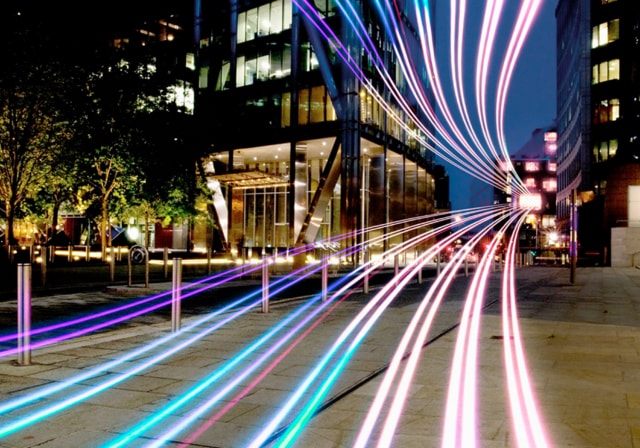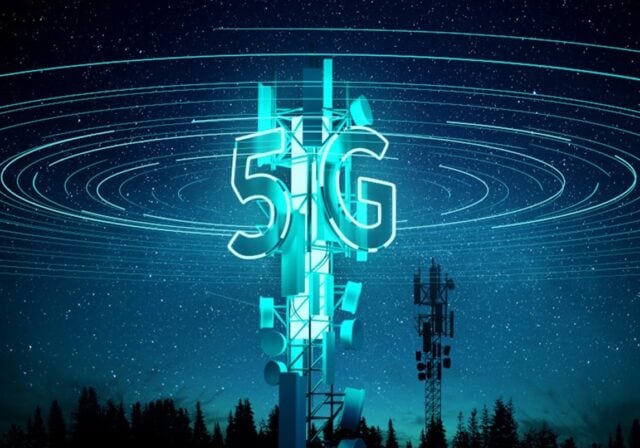In this article, we'll explore the key differences between 4G vs. 5G, covering speed, latency, coverage, device compatibility, real-world applications, and even touch on the future capabilities of 6G.
4G vs. 5G: Key differences
- Speed: 4G LTE typically offers peak download speeds around 100 Mbps, whereas 5G networks are approximately 10 times faster, often delivering speeds of 1 Gbps or more. To put this in perspective, an 8K movie download that might take 9 minutes on 4G LTE could take just 16 seconds on a 5G network.
- Latency: Latency refers to the delay in data transfer. 4G networks generally experience latency of about 30-50 milliseconds (ms), while 5G dramatically reduces this to as low as 1 ms, meaning actions like tapping a button in a game register almost instantly instead of with a noticeable delay.
- Capacity: 5G networks support more devices than 4G. This increased capacity is crucial for smart homes and crowded public places where numerous devices compete for bandwidth. The more capacity, the fewer disruptions to you.
- Technology: Unlike 4G, which operates primarily on lower frequencies, 5G utilizes a combination of low, mid, and high-band frequencies (mmWave). This allows 5G networks to provide improved coverage, faster speeds, and better reliability.
- Coverage: Currently, 4G has broader coverage, but 5G is expanding quickly; over the next few years, 5G deployments are expected to outpace 4G availability in most areas, eventually offering stronger indoor coverage, wider reach, and more consistent connectivity.
- Device compatibility: Most smartphones and devices support 4G LTE, while 5G requires newer devices designed to tap into its added capabilities. If you want to take advantage of 5G features, checking that your device supports 5G is helpful -
—but 4G will continue to play an important role in keeping people connected for the foreseeable future.
What is 4G?
4G is the fourth generation of wireless technology, offering faster speeds than previous networks and supporting everyday activities like video streaming, video calls, and ride-sharing. 4G LTE (Long Term Evolution) is an enhanced version of 4G that delivers even faster data performance, improved reliability, and broader coverage.
What is 5G?
5G is the fifth generation of mobile connectivity, designed specifically to address the limitations of 4G, such as speed, latency, and capacity. With its advanced architecture, 5G significantly improves overall network performance and reliability, enabling emerging technologies like autonomous vehicles, virtual reality, and advanced IoT systems - the network of everyday connected devices such as smart home gadgets, wearables, and sensors.
3 real-world applications of 5G
5G is driving the future, powering transformative applications including:
- Smart cities: Some cities are now utilizing 5G for managing traffic flow, monitoring air quality, and optimizing public resources through IoT devices.
- Autonomous vehicles: Low latency enables self-driving vehicles to communicate instantly, ensuring safety and reliability.
- 3. Healthcare: Real-time remote surgeries and patient monitoring systems benefit from 5G’s speed and reduced latency.
The future of 5G
5G adoption is rapidly expanding. By 2028, approximately 5 billion 5G subscriptions could exist, enabling a fully interconnected world where IoT becomes commonplace. With ongoing infrastructure development and growing smart ecosystems, 5G’s potential will continuously evolve.
4G vs. 5G speed difference
If you’re wondering: “How much faster is 5G than 4G?”, here’s a more detailed breakdown:
- Average speeds:
- 4G LTE typically delivers average download speeds of 30–100 Mbps.
- 5G average download speeds typically range between 300 Mbps–1 Gbps, about 10 times faster than typical 4G speeds.
- Ideal conditions:
- Under perfect conditions (minimal congestion, proximity to cell towers), 5G has the potential to achieve speeds up to 10 Gbps, roughly 100 times faster than standard 4G speeds.
- Real-world example:
- Downloading an 8K movie (approximately 5GB):
- 4G LTE (30 Mbps): Uploading a high-resolution photo album could take around 1 minute
- 5G (1 Gbps): The same upload could finish in just a few seconds
- Downloading an 8K movie (approximately 5GB):
4G vs. 5G coverage comparison
4G currently offers wider coverage, particularly in rural areas. However, 5G is rapidly expanding, poised to overtake 4G soon. Consider these key points:
- 4G coverage:
- Broad coverage across most populated regions.
- More reliable in rural and suburban regions due to well-established infrastructure.
- Indoor coverage can be challenging in densely built areas or remote locations.
- 5G coverage:
- Uses diverse frequency bands (low, mid, high-band), greatly enhancing future coverage.
- Rapid expansion, with dense coverage already established in urban and suburban areas.
- Current limitations in rural regions due to higher frequency limitations; ongoing expansion efforts are starting to resolve this.
- Future outlook:
- Ongoing deployment of smaller cells to expand coverage significantly.
- Expect broad coverage (both rural and urban) within the next 2–5 years.
4G vs. 5G SIM card comparison
SIM cards play a critical role in connecting your device to a network. Here’s how 4G and 5G SIM cards differ:
- 4G SIM Cards:
- Widely compatible; most modern smartphones are already equipped with 4G LTE SIMs.
- Designed specifically for use with 4G networks, ensuring compatibility and connectivity.
- 5G SIM Cards:
- Typically require a new SIM card or eSIM designed explicitly for 5G to fully utilize the network's capabilities.
- Enable advanced authentication and security features unique to 5G.
- Support faster, more stable connectivity by optimizing for multiple frequency bands (low, mid, mmWave).
- Considerations:
- Upgrading to 5G may require obtaining a new SIM or activating an eSIM through your carrier.
- Some carriers offer dual SIM devices, allowing simultaneous 4G and 5G connectivity.
4G vs. 5G coverage map
Understanding coverage maps helps users identify available network services and quality in different regions.
- 4G coverage map:
- Typically widespread coverage across the U.S., with strong presence in urban, suburban, and many rural regions.
- Coverage can become patchy in extremely rural or mountainous areas.
- Indoor penetration is generally reliable but can be limited in densely populated urban areas.
- 5G coverage map:
- While initially concentrated in urban and densely populated suburban areas, rural coverage expansion remains underway, with infrastructure (small cells) rapidly deploying nationwide.Many cities and suburban areas currently enjoy extensive 5G coverage.
- High-band (mmWave) frequencies provide very high speeds in urban areas but have limited range.
- Low- and mid-band frequencies are becoming widespread, significantly improving overall coverage and indoor penetration.
- Future developments:
- Continuous rollout of new small cell technology to bridge coverage gaps.
- Expect significant rural expansion and better indoor penetration over the next several years.
What is 6G?
6G represents the next step in mobile technology, expected to debut around 2030. Early concepts of 6G focus on revolutionary features including even higher data rates, improved energy efficiency, and integrated artificial intelligence.
Top 4 rumored features of 6G
- Speeds potentially 100 times faster than 5G
- Further reduced latency (approaching real-time)
- Integration with advanced AI capabilities
- More energy-efficient, sustainable networks
5 FAQs about 4G vs. 5G
- Are there any big differences between 4G and 5G service on your phone?
Yes, 5G delivers significantly faster speeds than 4G with noticeably lower latency, improving video streaming, downloads, gaming, and app performance.
- Is it better to get 4G or 5G?
5G is ideal if you need faster speeds, low latency, and future-proof connectivity. However, 4G currently offers broader coverage and is sufficient for basic needs.
- Will 4G be phased out?
Eventually, yes. While 4G will coexist with 5G for years, carriers will gradually phase it out as 5G coverage and adoption increase.
- What are the disadvantages of 5G over 4G?
5G faces challenges such as limited rural coverage currently, although it’s expanding, and higher power usage on some devices.
- Do I really need 5G on my phone?
Adopting 5G ensures faster performance, more features, and future readiness as network capabilities expand rapidly.
4G vs. 5G: Understanding your connectivity needs
Understanding how 4G and 5G differ can give you a better sense of what to expect from your mobile connection. In short, 5G delivers faster speeds, lower latency, better coverage, and support for more devices than 4G. Still, your real-world experience can vary depending on things like where you are, how busy the network is, and whether your device supports 5G. Staying informed helps you keep up as mobile technology keeps moving forward.
You might also be interested in:
- Moving the 5G Network Forward
- What are the Benefits of 5G? 5 Main Advantages and Use Cases
- GSM vs. CDMA: What You Need To Know About Phone Bands
- What is 5G Network Architecture?
Sources:
- https://www.scirp.org/pdf/jcc_2021012114154437.pdf
- https://www.ijfmr.com/papers/2024/3/18708.pdf
- https://www.iosrjournals.org/iosr-jece/papers/Vol.%2010%20Issue%206/Version-3/L010636772.pdf
- https://www.rfwireless-world.com/terminology/4g-vs-5g-lte-nr-network-architecture-comparison
- https://arxiv.org/html/2312.00957v2
- https://www.ericsson.com/en/press-releases/2022/11/ericsson-mobility-report-global-5g-growth-amid-macroeconomic-challenges





